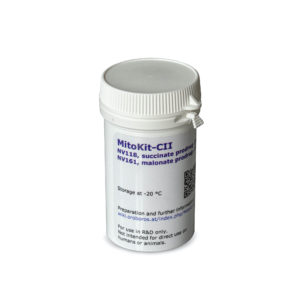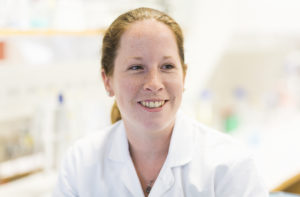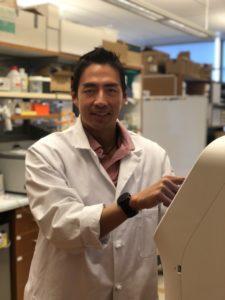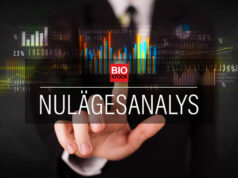
NeuroVives prestigefyllda forskningssamarbeten bär frukt
NeuroVive Pharmaceutical har sedan länge insett vikten av att arbeta nära ledande forskare. Sedan 2016 har Lundabolaget, som utvecklar läkemedel mot framförallt mitokondriella sjukdomar, samarbetat med amerikanska Children’s Hospital of Philadelphia och University of Pennsylvania för att vidareutveckla sina projekt. Två färska vetenskapliga artiklar kopplade till dessa samarbeten visar nu hur NeuroVives s.k. succinat-prodroger kan ha positiva effekter brett inom mitokondriell medicin. BioStock fick chansen att prata med några av forskarna bakom dessa artiklar.
NeuroVive Pharmaceutical har över tjugo års erfarenhet inom sitt huvudsakliga fokusområde primära mitokondriella sjukdomar. Mitokondrierna som finns inuti våra celler och skapar den energi som krävs för att vi ska fungera optimalt. För en individ drabbad av en primär mitokondriell sjukdom fungerar energiproduktionen i mitokondrierna inte som den ska vilket kan leda till cellskada och svårigheter för kroppens olika organ att utföra sina grundläggande funktioner såsom att växa, röra sig och andas.
Amerikanska samarbeten
Bland de institutioner som NeuroVive samarbetar med finns Children’s Hospital of Philadelphia (CHOP) och University of Pennsylvania (PENN). CHOP är inte bara ett av världens största barnsjukhus och rankat som ett av de allra bästa sjukhusen för barn i USA, utan här finns även det välrenommerade Mitochondrial Disease Clinical Center, ett center för barn och vuxna med mitokondriella sjukdomar.
 Fokus på succinat-prodroger
Fokus på succinat-prodroger
NeuroVives samarbeten med CHOP och PENN fokuserar i första hand på mitokondriella sjukdomar och hur bolagets NVP015-program kan användas för att utveckla behandlingar mot dessa. NVP015-projektet baseras på ett koncept framtaget av Eskil Elmér, NeuroVives forskningschef samt adjungerad professor vid Lunds universitet, i nära samarbete med kemister vid det brittiska bolaget Isomerase Therapeutics. Konceptet går ut på att det kroppsegna energisubstratet bärnstenssyra – succinat – görs tillgängligt inne i cellen via en s.k. prodrogteknologi. En prodrog är en inaktiv läkemedelssubstans som aktiveras först när det kommer in i kroppen då dess kemiska struktur ändras.
Den absolut vanligaste orsaken till primär mitokondriell sjukdom är genetiska defekter som påverkar komplex I i mitokondriens s.k. andningskedja. Fem enzymkomplex samarbetar för att tillverka den energi som mitokondrierna alstrar. NeuroVives succinat-prodroger riktar sig direkt till stimulering av komplex II och kringgår det defekta komplex I. Med en succinat-prodrog kan man alltså föra in energisubstratet, vilket i sig självt i regel inte kan tränga igenom cellväggen, till celler i organ som behöver understödjas till följd av mitokondriell sjukdom. Mitokondriella skador kan även uppkomma till följd av t.ex. förgiftningar och annan yttre påverkan.
Upprepade injektioner av soft money
NeuroVives samarbeten med CHOP har attraherat betydande finansiella anslag från tunga amerikanska organisationer. Under 2018 tilldelades ett av dessa samarbetsprojekt ett treårigt anslag på 4 090 281 USD av det amerikanska försvarsdepartementets Office of the Congressionally Directed Medical Research Program. Projektet syftar till att studera effekterna av NVP015-substanser i experimentella modeller av primära mitokondriella sjukdomar.
Projektet leds av Dr Todd Kilbaugh, docent i anestesiologi, intensivvård och pediatrik, som även är ansvarig för ett projekt som 2017 tilldelades ett bidrag på 473 000 USD från National Institutes of Health (NIH). Bidraget erhölls för att studera NVP015s förmåga att stödja mitokondriell funktionsåterhämtning och förebyggande av organsvikt efter direkt exponering av giftiga kemikalier.
På hemmaplan har projektet NVP015/NV354 belönats med två forskningsanslag från Vinnova på totalt 6 Mkr.
I forskning och på väg mot klinik
Ett av de hittills viktigaste stegen inom NVP015-projektet var valet av kandidatsubstansen NV354 för fortsatt utveckling inom primära mitokondriella sjukdomar. NV354 befinner sig nu i preklinisk utveckling och efter goda resultat där räknar NeuroVive med att under 2020 slutföra den dokumentation som krävs för att kunna inleda kliniska studier i människa under första halvåret 2021. Kandidaten riktar sig mot Leighs syndrom, den vanligaste medfödda mitokondriella sjukdomen bland barn. De drabbade barnen har mycket svåra symptom och avlider ofta före fem års ålder.
Uppmärksammat projekt har resulterat i licensavtal
Men det är inte bara forskare, sjukhus och myndigheter som har intresserat sig för NeuroVive och bolagets kandidater, utan NVP015-programmet har även burit frukt i form av ett utlicensieringsavtal med ett totalt potentiellt värde om 60 miljoner dollar. Under 2018 utlicensierades nämligen molekyler från NVP015 till BridgeBio Pharma. BridgeBio startade ettdotterbolag, Fortify Therapeutics, som utvecklar molekylerna för en riktad behandling av Lebers hereditära optikusneuropati (LHON), ett annat exempel på en primär mitokondriell sjukdom.
Avtal med ledande leverantör
Vad som framförallt har skapat det stora intresset för NeuroVives NVP015-substanser är att de är cellpermeabla vilket innebär att de besitter förmågan att ta sig in i celler och påverka komplex II i mitokondriens andningskedja. Prodroger av succinat stimulerar komplex II. NeuroVive har i samarbete med Isomerase även tagit fram en cellpermeabel prodrog av det kroppsegna ämnet malonat, som i sin tur hämmar komplex II. Detta ger forskare inom mitokondriell fysiologi och medicin fler verktyg för att utvärdera cell- och mitokondriefysiologi samt mitokondriernas roll i sjukdomar, i cellulära modeller.

Under fjolåret slöt NeuroVive ett kommersiellt exklusivt avtal med Oroboros Instruments. Det österrikiska bolaget är världsledande inom utveckling och förmedling av analysinstrument och reagenser till forskning och utveckling inom mitokondriell medicin. Idag skickar Oroboros Instruments med två av NeuroVives prodroger – NV118 (succinatproddrog) och NV161 (malonatprodrog) – till alla kunder som köper deras utrustning, vilket innebär en betydande spridning för NeuroVives prodroger som säljs under namnet MitoKit-CII. Att en sådan tung spelare som Oroboros Instruments väljer NeuroVives prodroger måste ses som ett viktigt erkännande av bolagets forskning kring mitokondriell medicin.
Genererar vetenskapliga artiklar
Bolagets prodroger används alltså både kommersiellt och genom NeuroVives omfattande samarbete med olika forskningsinstitutioner. De senare har nu alltså lett till två nya, intressanta vetenskapliga publikationer. I början av april publicerades en studie där NeuroVives prodrog NV241 använts. Studiens syfte var att undersöka mitokondrier som potentiellt terapeutiskt mål i behandlingen av överdosering av paracetamol, något som är vanligt förekommande och kan leda till allvarliga leverskador. Studien, som genomfördes i cellulära modeller, visade att NeuroVives succinat-prodrog kunde ’rädda’ den mitokondriella respirationen efter akut paracetamolförgiftning. BioStock har talat med huvudförfattaren Sarah Piel, PhD, forskare vid CHOP, om studien och NeuroVives prodroger.

Firstly, Dr Piel, this study is not the first time you have worked with NeuroVive. Can you tell us a bit more about your connection to NeuroVive?
– In my PhD in Mitochondrial Medicine from Lund University I evaluated cell-permeable succinate prodrugs, one of NeuroVive’s pharmaceutical strategies (NV015), as potential treatment for drug-induced mitochondrial dysfunction. The cell-permeable succinate prodrugs were originally developed as therapeutic for genetic mitochondrial disease, with mitochondrial complex I being most commonly affected.
– Because succinate is used for energy production by mitochondrial complex II it can bypass complex I and serve as an alternative energy substrate. Like in genetic mitochondrial disorders, mitochondrial complex I is also a common target for a wide range of drugs and highly metabolic tissues are often a target of drug-related toxicities. Therefore, acute intoxication due to intentional or accidental overdose presents an additional target indication which can benefit from this pharmaceutical concept.
Can you briefly describe the purpose of the current study?
– In this study we evaluated the mitochondrial toxicity of the common pain killer paracetamol (acetaminophen) and how cell-permeable succinate prodrugs can counteract that dysfunction. Paracetamol is the most common over-the-counter pain medication used worldwide. Although generally considered safe at therapeutic dosage it is the most common cause for acute liver failure in the western world.
– Currently, the only one clinically approved treatment option for paracetamol overdose is the antioxidant N-acetylcysteine which primarily protects healthy liver cells from paracetamol rather than rescuing the already damaged cells. Therefore, alternative treatment options are needed targeting the latter cell population. Mitochondrial dysfunction plays a critical role in the development of paracetamol-induced liver injury and therefore we wanted to investigate whether cell-permeable succinate prodrugs have potential as treatment strategy to counteract paracetamol-induced liver injury.
Can you elaborate on how NeuroVive’s prodrugs were used and what results you achieved?
– In this study we used NV241, one of the main candidates of the first generation of cell-permeable succinate prodrugs, generated before NV354 was developed. These earlier compounds are ideal for lab studies whereas NV354 has been optimised for clinical use.
– We simulated acute intoxication of human derived liver cells with paracetamol and evaluated treatment efficacy following paracetamol overdose ex vivo while continuously monitoring oxygen consumption to assess mitochondrial function. Following acute exposure to paracetamol mitochondrial complex I-linked but not mitochondrial complex II-linked oxygen consumption was impaired. We then showed that treatment with the cell-permeable succinate prodrug NV241 rescued paracetamol-induced impaired mitochondrial respiration.
What, according to you, does the results say about the potential of NeuroVive’s prodrugs within the treatment of paracetamol overdoses?
– The results of our in vitro study present pharmacological bypass of paracetamol-induced mitochondrial toxicity with cell-permeable succinate prodrugs as a promising alternative treatment strategy for paracetamol-induced liver injury.
– The next step in developing cell-permeable succinate prodrugs as treatment for paracetamol-induced liver injury is to evaluate their treatment efficacy in vivo in experimental models of acute paracetamol overdose to bring it closer to clinical application.
Are there any other treatment areas where you can see potential for NeuroVive’s prodrugs?
– Here at the Children’s Hospital of Philadelphia and under the lead of Todd Kilbaugh, Associate Professor of Anesthesiology, Critical Care, and Pediatrics, we have developed a pre-clinical drug development platform to evaluate mitochondrial-targeted therapeutics. With the aim to find effective treatments for acute critical illnesses where mitochondrial function is negatively altered this drug-development platform will be used to lead novel, mitochondrial targeted therapeutics through the pre-clinical drug development stage. NeuroVive’s prodrugs are the first therapy that is evaluated using this platform.
– The cell-permeable succinate prodrugs are investigated as treatment to counteract energetic deficits and prevent multi-organ failure following acute exposure to chemical warfare agents, toxic industrial agents and pesticides. This work is funded by the NIH program CounterACT. Like in acute drug overdose, mitochondrial complex I is a common target of many chemicals and there is scientific evidence that chemically-induced mitochondrial dysfunction contributes to long-term morbidity and mortality following acute chemical exposure.
– Improving mitochondrial function with the cell-permeable succinate prodrugs is a novel approach for drug development in this area which recently lead to a publication entitled “Mitochondrial respiratory chain complex I dysfunction induced by N-methyl carbamate ex vivo can be alleviated with a cell-permeable succinate prodrug” in the journal Toxicology in Vitro. In this study, we demonstrated that cell-permeable succinate prodrugs can rescue bioenergetic deficits induced by n-methyl carbamates, a chemical class of commonly used insecticides.
– Currently, NeuroVive’s prodrugs are further evaluated in our pre-clinical drug development platform in cellular and other experimental models of acute chemical poisoning with the organofluorine Sodium Fluoroacetate, the organophosphate Diisopropylfluorophosphate, and, under the lead of Dr David Jang, University of Pennsylvania, carbon monoxide and cyanide. Because the cell-permeable succinate prodrugs do not act on the chemical agent itself but act as a countermeasure to compensate for toxic injuries I believe it is widely applicable as pharmacological strategy for chemical poisoning and drug overdose related critical illnesses.
Nyligen publicerades ytterligare en studie som hade använt en av NeuroVives prodroger. I det här fallet gäller det en forskargrupp vid PENN som undersökte hur man kan använda NV118 för att förbättra mitokondriefunktionen i celler från patienter med kolmonoxidförgiftning. BioStock har talat med huvudförfattare David H. Jang, assistant professor, University of Pennsylvania Perelman School of Medicine, Department of Emergency Medicine and Division of Medical Toxicology.

To begin with, what was the aim of this study?
– The paper that was recently accepted for publication in the American Journal of Physiology-Cell Physiology is entitled, “Ex vivo use ofcell-permeable succinate prodrug attenuates mitochondrial dysfunction in blood cells obtained from carbon monoxide poisoned individuals.”
– The aim of this study was to examine mitochondrial dysfunction in carbon monoxide (CO) poisoning using blood cells as a surrogate marker from patients with acute CO poisoning. We have performed two prior studies that show that blood cells may be a better marker of clinical severity of disease then a carboxyhemoglobin (CoHB) and that the standard treatment for CO, which is hyperbaric oxygen may have adverse effects such as increased generation of radicals.
How was NeuroVive’s NV118 used in this particular project?
– In this study we applied the use of NV118 (ex vivo) in the same blood cells obtained from acutely CO poisoned patients. We were able to demonstrate a rescue effect of partial Complex IV inhibition of CO and overall improved mitochondrial respiration with the use of NV118.
– Also important to our work is the Oroboros O2k. One of the issues with in vitro cyanide and carbon monoxide work is the potential for off gassing so this may effect results. The self-contained chambers of the O2k ensures that the work we do with the succinate prodrug is accurate and reproducible.
If we look at the bigger picture, can you tell us about how you use NeuroVive’s prodrugs in your research?
– First, I would also like to acknowledge our multidisciplinary team at the University of Pennsylvania and the Children’s Hospital of Philadelphia along with Lund University. The research I am pursuing is only made possible with my collaboration with Drs. Sarah Piel, Johannes Ehinger and Todd Kilbaugh who I know are quite experienced in the field of mitochondrial medicine and critical illnesses, especially in regard to the succinate prodrug.
– With that being said as a Medical Toxicologist, my research has been focused on investigating therapeutics in Complex IV poisoning. The common one medical toxicologist provides care for are agents that include CO, cyanide, hydrogen sulfide and phosphides. Taken together these are all very potent poisons with high mortality and morbidity with exposure. Unfortunately, there are no good reliable treatments for these agents which rely on supportive care and antidotes that have variable treatment effects. As it is well known, the field of mitochondrial-based therapeutics is limited, and the succinate prodrug have a lot of potential to change treatment in the field of toxicology.
What characteristics do NeuroVive’s prodrugs possess that make them useful for your research?
– One of the big questions that remains in the treatment of Complex IV poisoning is what the effect of increasing Complex II respiration with the succinate prodrug will have on Complex IV inhibition. As a toxicologist, in many cases of Complex IV inhibition, there will be functional CIV activity and that the use of the succinate prodrug may be helpful in this instance.
– We also recently submitted a manuscript describing the use of the succinate prodrug in an in vitro model of cyanide poisoning where we were able to demonstrate increased respiration with partial Complex IV inhibition with cyanide and attenuation of radical production (superoxide). Having a potential treatment that could be administrated in the field with efficacy is critical in my field that these succinate prodrugs provide.
Finally, what are your future plans regarding research with NeuroVive’s prodrugs?
– Our group’s future plan is focused on the in vivo application of the succinate prodrug in experimental models of poisoning. We anticipate the funding of an NIH award to evaluate this succinate prodrug in an experimental model of CO poisoning. Drs. Piel, Ehinger and Kilbaugh as well as myself plan to also evaluate the succinate prodrug in another, more advanced, experimental model with also potential NIH funding. Our group is poised for effective preclinical trials with the expectation for clinical application in the near future and an opportunity to offer treatment to people with severe intoxications.
Innehållet i BioStocks nyheter och analyser är oberoende men BioStocks verksamhet är i viss mån finansierad av bolag i branschen. Detta inlägg avser ett bolag som BioStock erhållit finansiering från.



